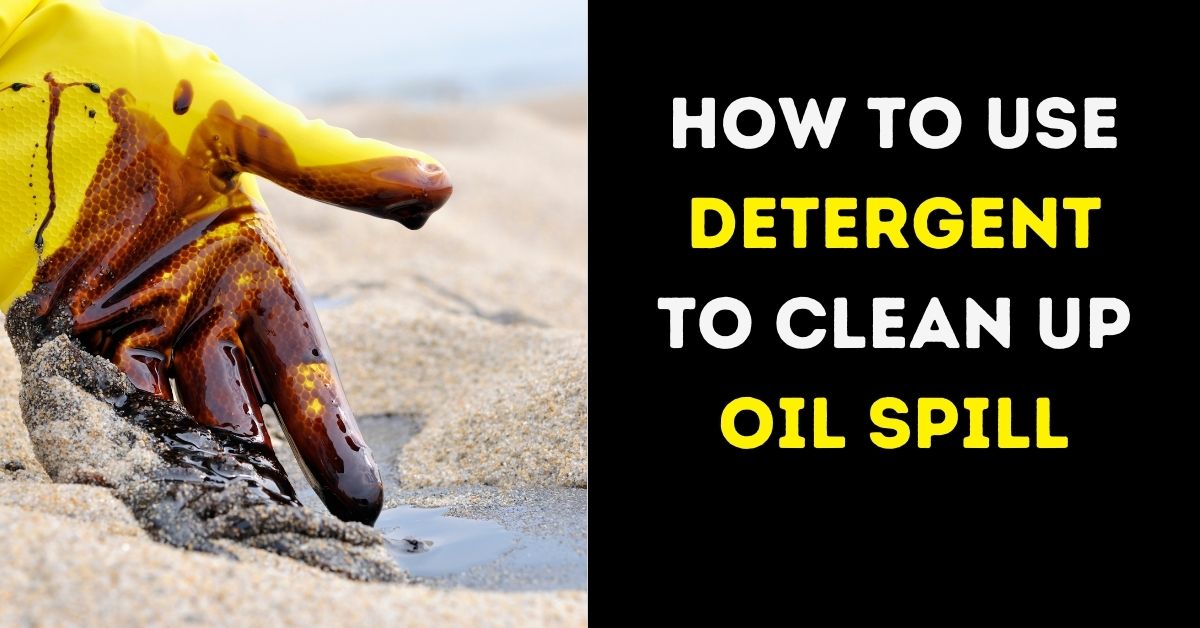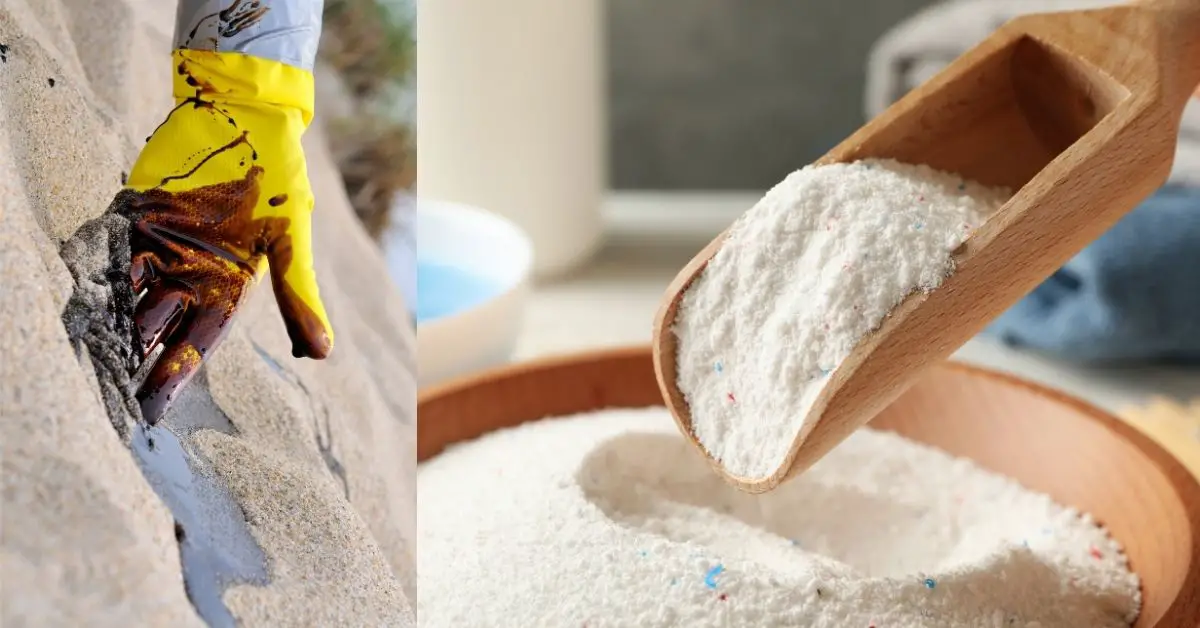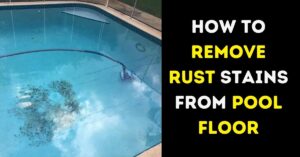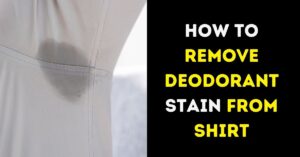
Oil spills represent a grave threat to our environment, causing widespread ecological damage and harm to marine life. When these disasters occur, swift and effective cleanup is essential to mitigate their impact.
A powerful tool to use in this cleanup arsenal is detergent. In this post, we will discuss how detergent can be used to clean up oil spills, diving into the science behind it, safety measures to consider, and the step-by-step process.
Does Detergent Clean up Oil Spills?

Yes, detergent can be used to clean up oil spills. Detergents are surfactants, which means they have the ability to break down the surface tension of water and oil, allowing them to mix. This property makes detergents effective at dispersing and emulsifying oil, which is a crucial step in the cleanup process.
Here’s how detergent helps clean up oil spills:
1. Emulsification
Detergents break down the oil into smaller droplets, creating an emulsion. This emulsified mixture is easier to handle and remove from the water surface.
2. Increased Solubility
Detergents increase the solubility of oil in water, allowing the oil to mix with the water more effectively. This helps in removing the oil from the water.
3. Facilitating Removal
Once the oil is emulsified, it can be more easily removed using various methods such as skimming, vacuuming, or absorbent materials.
Safety Precautions Before Using Detergent To Clean Oil Spill
Here are some key safety precautions you should always keep in mind:
1. Protective Gear and Equipment
It’s important to wear the appropriate personal protective equipment (PPE) when dealing with oil spills and detergents. This includes gloves, safety goggles, chemical-resistant suits, and respirators. These items provide a barrier between you and harmful substances, reducing the risk of exposure.
2. Proper Training and Certification
Before engaging in oil spill cleanup with detergents, ensure that you and your team receive adequate training and certification.
These proper techniques, safety procedures, and equipment operation are essential for preventing accidents and minimizing harm to both you and the environment.
3. Legal and Ethical Aspects
Familiarize yourself with the legal and ethical aspects of oil spill cleanup. Depending on your location and the scale of the spill, there may be specific regulations and permits required for cleanup activities.
Always comply with local laws and regulations to avoid legal consequences and contribute to responsible environmental stewardship.
4. Communication and Coordination
Effective communication and coordination among team members are crucial during oil spill cleanup. Establish clear channels for reporting emergencies and sharing information about potential hazards.
Ensure everyone understands their roles and responsibilities to maintain a safe working environment.
5. Emergency Response Plan
Develop and practice an emergency response plan for unexpected situations during cleanup operations. This plan should include procedures for handling chemical exposure, fire, injuries, and other emergencies. Regular drills and updates to the plan are essential to ensure readiness.
6. Documentation
Keep thorough records of all activities, incidents, and safety measures during the cleanup process. Proper documentation can be essential for regulatory compliance, insurance claims, and post-cleanup assessments.
Steps to Clean Up an Oil Spill Using Detergent
1. Assess the Spill and Its Impact
The first step is to assess the extent of the oil spill and its potential impact on the environment. This assessment helps you determine the scale of the cleanup operation, the type of oil involved, and the specific detergent and equipment required.
Also, consider factors such as weather conditions and the proximity of sensitive ecosystems.
2. Establish Containment Measures
Before applying detergent, you must contain the spread of the oil. Use booms, barriers, or other containment methods to prevent the oil from spreading further and causing more damage.
These measures are essential for limiting the affected area and making the cleanup more manageable.
3. Apply Detergent
Apply the appropriate detergent to the oil spill according to the manufacturer’s guidelines and the specific conditions of the spill.
Detergents work by breaking down the oil into smaller, more manageable particles, making it easier to remove. Ensure even distribution of the detergent across the affected area.
4. Use Agitation and Dispersion Techniques
To enhance the effectiveness of the detergent, use agitation and dispersion techniques. This can involve using mechanical equipment like skimmers or booms to mix the detergent with the oil, creating an emulsion. The emulsified oil can then be more easily removed from the water surface.
5. Collect and Dispose of Contaminated Materials
As the detergent does its work, collect the emulsified oil and detergent mixture using skimmers, vacuum trucks, or absorbent materials like sorbent pads.
Carefully handle and store the collected materials in accordance with local regulations for hazardous waste disposal. Avoid any further contamination of the environment during this process.
6. Rinse and Monitor
After removing as much of the emulsified oil as possible, rinse the affected area thoroughly with clean water to remove any remaining detergent and oil residues.
Monitor the area over time to ensure that no lingering contamination remains. Continue water quality testing to assess the environmental impact.
7. Final Assessment and Reporting
Conduct a final assessment of the cleanup efforts to ensure that all necessary measures have been taken to mitigate the oil spill’s effects. Prepare a detailed report summarizing the cleanup activities, including the quantities of oil and detergent used, environmental impact assessments, and disposal records.
8. Rehabilitate and Restore
Depending on the severity of the oil spill, consider rehabilitation and restoration efforts to help the affected ecosystem recover. This may involve planting native vegetation, providing habitat enhancements for wildlife, or implementing long-term monitoring programs to ensure ecosystem health.
Final Words
The devastating impact of oil spills on our environment cannot be understated. However, by understanding how to use detergent in the cleanup process effectively, we can mitigate some of the damage and work towards a cleaner, healthier planet.
We’ve explored the safety precautions and step-by-step cleanup procedures. It’s evident that responsible oil spill cleanup is not just a technical endeavor but also a moral and ecological obligation.






